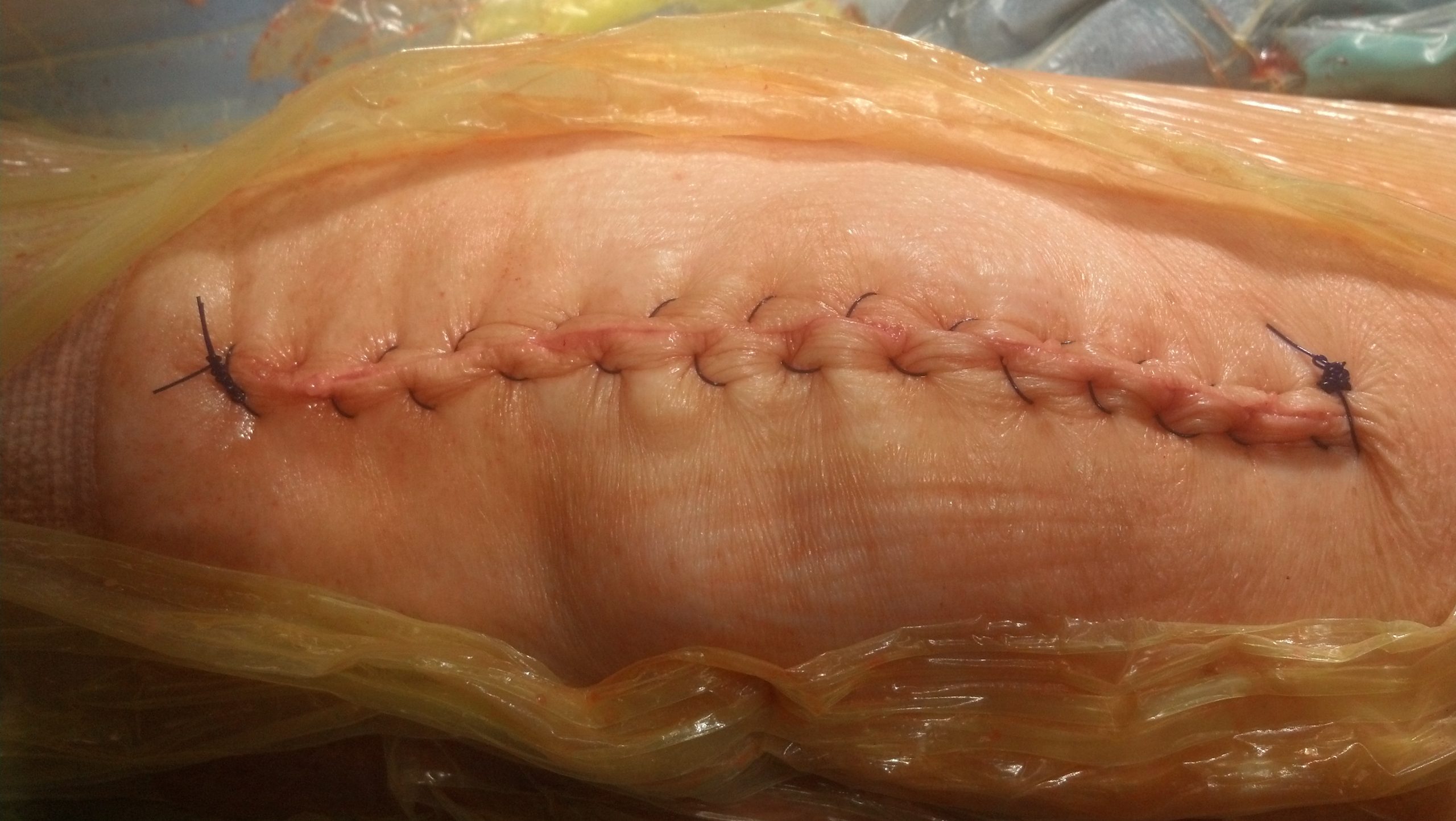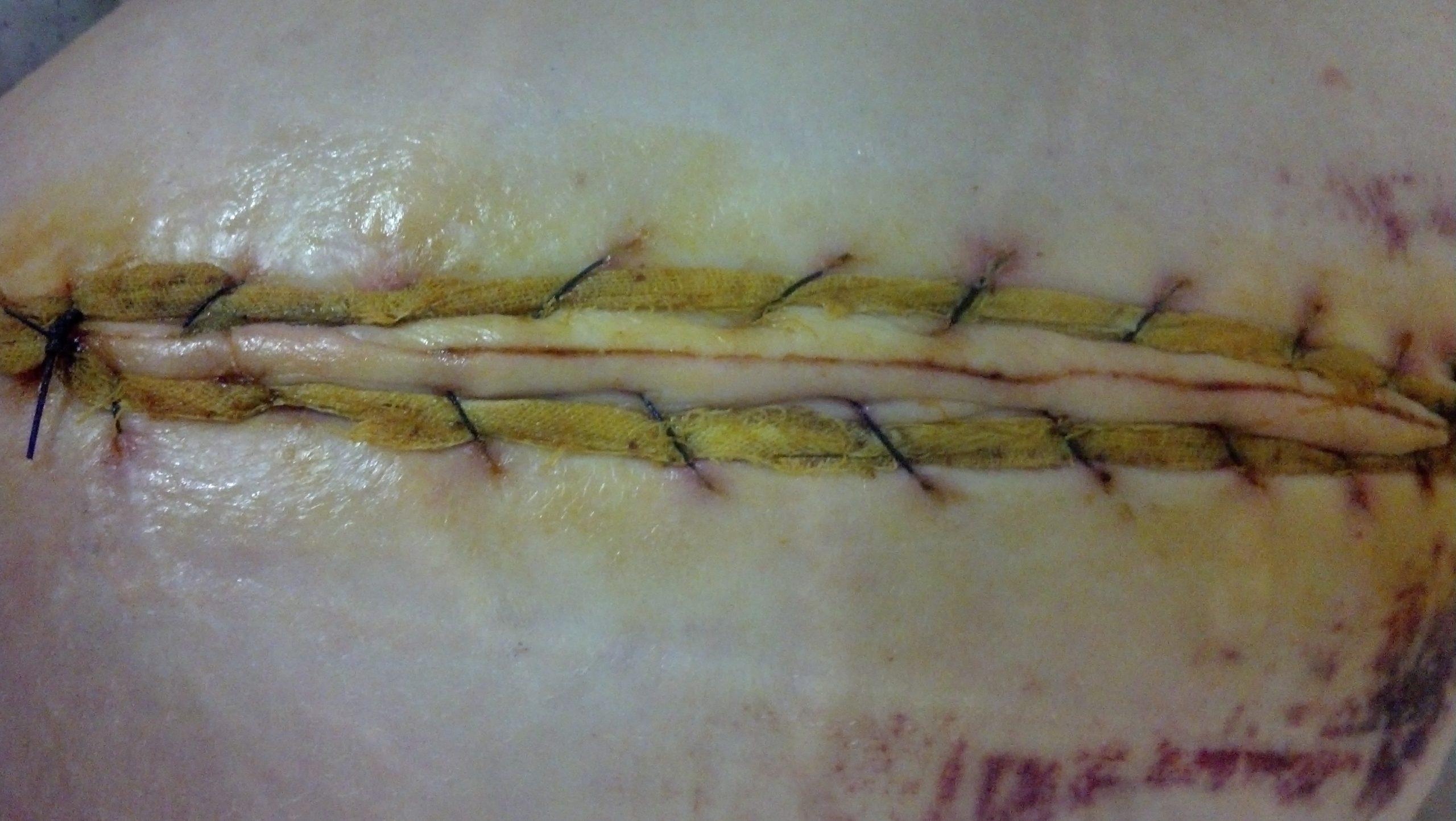- Discussion:
- Should Subcuticular Sutures be Avoided in TKR?
- references:
- Modality of wound closure after total knee replacement: are staples as safe as sutures? A retrospective study of 181 patients.
- Wound complications in joint arthroplasty: comparing traditional and modern methods of skin closure
- Staple vs. subcuticular vicryl skin closure in knee replacement surgery: a spectrophotographic assessment of wound characteristics.
- Running Verticle Matress Suture (0-PDS-plus)
- this suture technique takes care of the subcutaneous and skin layers;
- it allows for a rapid closure, with optimally everted skin edges, free of asymmetric wound tension;
- 45 deg angled sutures:
- angling the sutures at a 45 deg, may allow better perfusion (from random proximal to distal perfusion);
- patients can be allowed to max out on the CPM without concerns of skin necrosis or breakdown;
- references:
- Sutures versus staples for skin closure in orthopaedic surgery: meta-analysis.
- Skin closure using staples and Nylon sutures: a comparison of results
- Wound closure in flexion versus extension following total knee arthroplasty: a systematic review.
- Wound Complications in Joint Arthroplasty: Comparing Traditional and Modern Methods of Skin Closure
- tourniquet:
- some surgeons release tourniquet and achieve good hemostasis before wound closure where as others apply the compression dressing before closure
- references:
- Blood loss after total knee replacement. Effects of tourniquet release and continuous passive motion.
- The effects of early tourniquet release during total knee arthroplasty: a prospective randomized double-blind study.
- Closed suction drainage following knee arthroplasty. Effectiveness and risks.
- The use of postoperative suction drainage in total knee arthroplasty.
- Closed Suction Drainage for Hip and Knee Arthroplasty. A Meta-Analysis.
- Effect of the Timing of Tourniquet Release on Perioperative Blood Loss Associated With Cementless Total Knee Arthroplasty: A Prospective Randomized Study.
- Emboli observed with use of transesophageal echocardiography immediately after tourniquet release during total knee arthroplasty with cement.
- Timing of Tournique Release in Knee Arthroplasty. Meta-Analysis of Randomized, Controlled Trials.
.........................................................................................................................................................................................................................................................



